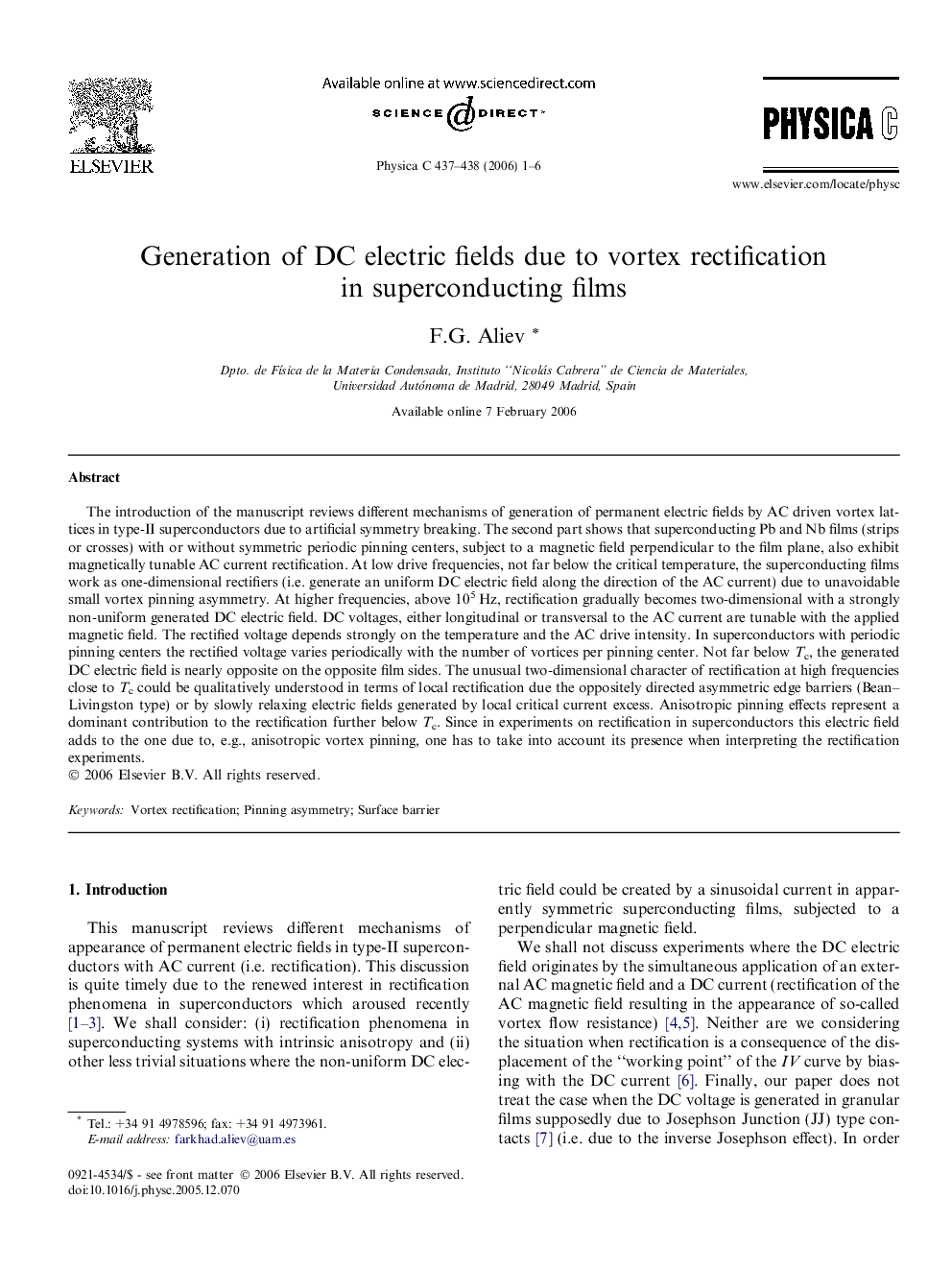| Article ID | Journal | Published Year | Pages | File Type |
|---|---|---|---|---|
| 1820912 | Physica C: Superconductivity and its Applications | 2006 | 6 Pages |
Abstract
The introduction of the manuscript reviews different mechanisms of generation of permanent electric fields by AC driven vortex lattices in type-II superconductors due to artificial symmetry breaking. The second part shows that superconducting Pb and Nb films (strips or crosses) with or without symmetric periodic pinning centers, subject to a magnetic field perpendicular to the film plane, also exhibit magnetically tunable AC current rectification. At low drive frequencies, not far below the critical temperature, the superconducting films work as one-dimensional rectifiers (i.e. generate an uniform DC electric field along the direction of the AC current) due to unavoidable small vortex pinning asymmetry. At higher frequencies, above 105Â Hz, rectification gradually becomes two-dimensional with a strongly non-uniform generated DC electric field. DC voltages, either longitudinal or transversal to the AC current are tunable with the applied magnetic field. The rectified voltage depends strongly on the temperature and the AC drive intensity. In superconductors with periodic pinning centers the rectified voltage varies periodically with the number of vortices per pinning center. Not far below Tc, the generated DC electric field is nearly opposite on the opposite film sides. The unusual two-dimensional character of rectification at high frequencies close to Tc could be qualitatively understood in terms of local rectification due the oppositely directed asymmetric edge barriers (Bean-Livingston type) or by slowly relaxing electric fields generated by local critical current excess. Anisotropic pinning effects represent a dominant contribution to the rectification further below Tc. Since in experiments on rectification in superconductors this electric field adds to the one due to, e.g., anisotropic vortex pinning, one has to take into account its presence when interpreting the rectification experiments.
Keywords
Related Topics
Physical Sciences and Engineering
Physics and Astronomy
Condensed Matter Physics
Authors
F.G. Aliev,
